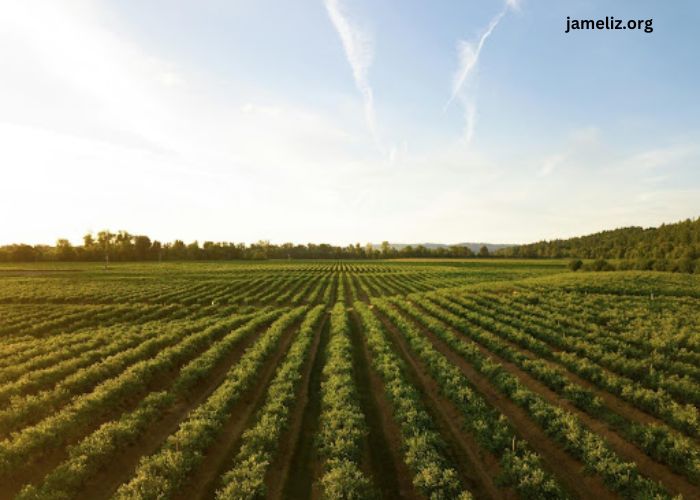On April 22nd, 2016, the Paris Agreement was signed in France. This international treaty covers topics such as climate change mitigation, the importance of finding ways to adapt to changing weather patterns and growing temperatures, as well as climate finance topics, such as the grants, loans, and domestic budgets needed to create resilience on a changing planet. Every year since then has been the hottest on record, and the climate crisis will only become worse unless direct action is implemented. 2025 is a crucial year in the fight against global warming. Emissions must start going down this year if long-term global temperature changes are to be kept under control.
It is time to switch to renewable energy at an ever-growing pace, and not just because of the environment. Clean power sources also mean energy sovereignty, better health, lower costs, and more security. During the last few years, both climate change and tense geopolitical situations have meant that many lived in fear of blackouts. Employing solar power, wind turbines, and hydroelectricity means these issues will become a thing of the past.
One of the sectors that requires urgent help is agriculture since global warming is causing crops to have reduced yields. Soils are also becoming unfit for farming, a situation that has far-reaching implications for both farmers and citizens. The potential for more widespread food insecurity as prices continue to climb is arguably the most pressing.
Soilless growing
Soilless growing, also known as hydroponics, is a technique that uses a water-based nutrient solution in order to grow plants instead of soil. Their main advantage is that they use up to 90% less water than the standard systems, and as time passes and new technologies are deployed, hydroponics are expected to become even more complex and advanced to make crops more nutritious. Recent developments and innovations in fields such as oxygenation have increased output quite considerably, helping farmers to become more profitable without doing any harm to the environment. An ever-growing range of crops can be sustained using this system, and their numbers are only expected to grow as demand continues to rise.
Cocoa farming
The global cocoa market is predicted to reach nearly $27 billion by 2027, a compound annual growth rate of roughly 4.5% compared to 2022. However, farmers have been dealing with a lot of problems due to the exacerbation of global warming, and the situation appears to only be getting worse instead of improving. Because of the stifling temperatures and droughts, farmers have seen their yields decrease significantly, leading them to expand into new areas. This, in turn, leads to deforestation, as trees need to be felled to make room for cocoa. This triggers a vicious cycle because deforestation causes higher carbon emissions, a key culprit in the global climate crisis.
Cocoa ingredients are indispensable for the food industry, so there’s no way that they could be removed entirely. One solution would be to implement organic cocoa farming which involves the use of natural fertilizers and almost no chemicals or pesticides. Farmers must be willing to accept solutions that completely eliminate or at least minimize the issue of deforestation, such as agroforestry, a technique that also improves the health of the soils and helps biodiversity thrive.
Water-saving tech
Wasting water is something that simply shouldn’t be allowed in a world that is struggling with droughts, wildfires, and the loss of drinkable water sources. Conserving water is necessary, and all industries must take the necessary steps to avoid waste. Closed-loop water systems are the answer, as they function in a contained environment to reuse and recirculate the water. This keeps the input required at a minimum and avoids waste. However, new technologies are being tested as well. One of them is the implementation of artificial intelligence solutions in this field.
Moisture monitoring and predictive analysis are much easier when AI is included, and the technology can cut usage even further. The use of substrates that can retain moisture for much longer while permitting aeration at the same time, as well as solutions for optimal drainage, are also employed by farmers. Data shows that in only a few years, the demand for fresh water will outpace the supply, and since agriculture accounts for approximately 70% of that demand, the use of the latest technologies is essential in order to prevent resource depletion.
The suppliers
Businesses and retailers must become committed to making their supply chains as sustainable as possible. For instance, those who manufacture confectionery products should only buy cocoa wholesale from producers who are transparent about their practices, are implementing green working standards, and can definitively say that their workers operate in healthy and ethical environments. It requires effort and research, as well as the acceptance of potential setbacks along the way, as some contracts will have to be terminated, and new providers will have to be discovered. But it is all part of the process.
Becoming sustainable and eco-friendly cannot be achieved without some major changes, which will definitely impact fundamental areas of a business but will all be very much worth it in the long term.
Vertical farms
Vertical farms would have sounded like an incredibly futuristic concept not so long ago, but they are now becoming more specialized and efficient every day. Their main advantage is their potential to reduce local food security for communities from all over the globe. Pairing with e-commerce platforms and retailers will expand access even further so that everyone has access to fresh produce that doesn’t have to travel thousands of miles to reach their plates.
Sustainability goals and milestones aren’t something that can be achieved in a single day. But as the global crisis continues to become more pressing, it is plain to see that immediate, practical action is needed in order to secure a clean and healthy future for everyone. The agriculture sector is vital, so in order to remain resilient and keep up with the demands of an ever-changing world, farmers need to find the right solutions that will allow them to continue to thrive.

